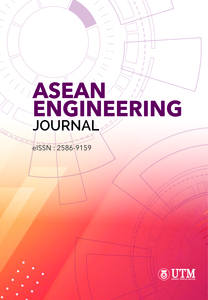APPLICATION OF COUPLED HEC-HMS AND US EPA WASP FOR TRANSPORT MODELLING OF MERCURY IN THE MINING-IMPACTED AMBALANGA RIVER
DOI:
https://doi.org/10.11113/aej.v11.17052Keywords:
ceedance, HEC-HMS, Hydrologic model, Pollution load reduction, Mercury transport, WASPAbstract
This study provides a simulation of mercury (Hg) transport in water and sediments in the mining-impacted Ambalanga River located in Upper Agno Subbasin in the Philippines. The Hydrologic Engineering Center - Hydrologic Modeling System (HEC-HMS) and Water Quality Analysis Simulation Program (WASP) of the US Environmental Protection Agency (EPA) were coupled to handle both hydrologic modelling and total Hg transport processes, respectively, for 12 months in the year 2014. Watershed delineation from Digital Elevation Model, rainfall and streamflow data from the local weather bureau, and dam operational data were used to develop the hydrological model. The calibrated HEC-HMS model satisfactorily simulated the flow in the river and its tributaries, which is then used as an input to the Hg transport model. The Ambalanga subbasin was conceptually divided into 29 segments in WASP to represent the water column and the surface benthic sediment. Time-variable sediment and Hg load were applied to the upstream of Ambalanga River. Total Hg concentration in water and sediments at five sampling locations along the Ambalanga River and two sampling locations along the Upper Agno River were measured in 2014-2015, in addition to the Hg monitoring data from the local environmental bureau. The gathered data were used to validate the WASP model, and results show that it was able to reasonably simulate the Hg fate and transport. Simulation results showed a downward trend in Hg concentration in surface water and sediments from upstream to downstream, while Hg in sediments was observed to stabilize over time. The model was further utilized to come up with exceedance curves of Hg in water and sediments as a result of the river’s response to different Hg loading from the known point sources. The exceedance curves derived from the model were used to determine the maximum permissible Hg loading to the river and identify pollution load reduction measures for river rehabilitation.
















